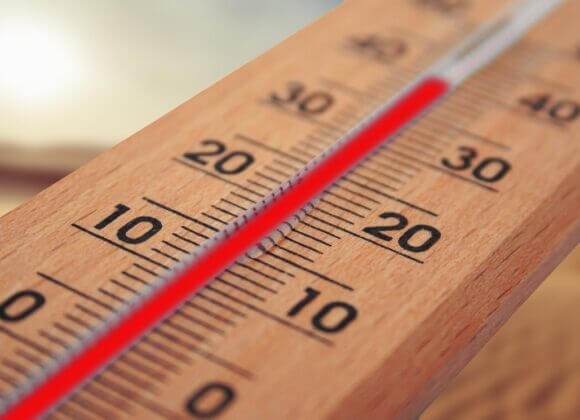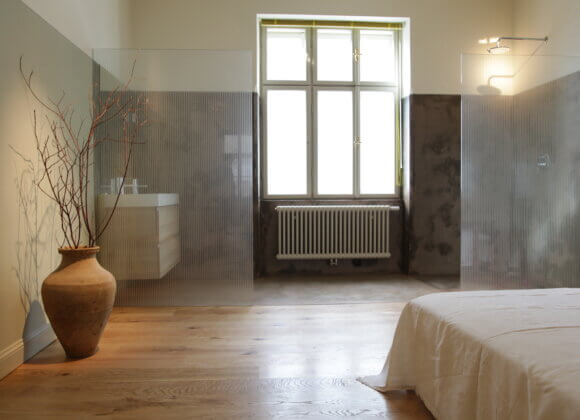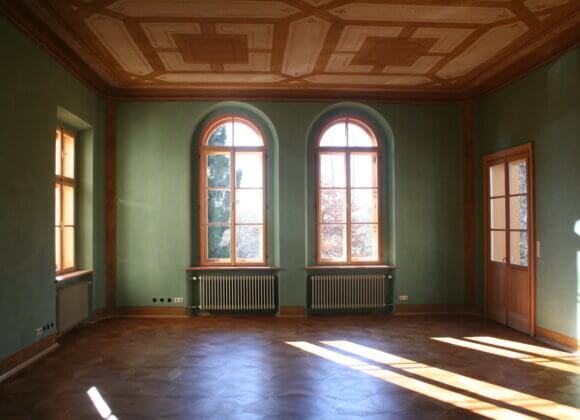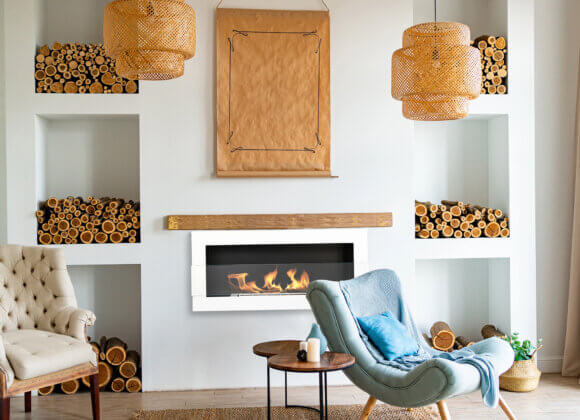Heating and cooling with building component activation
Concrete, but also bricks, can store heat and cold well. If this ability is utilized by means of building component activation, buildings can be tempered sustainably. And the feel-good factor is also increased.
When it gets colder outside, there’s nothing more pleasant than retreating into a comfortably warm room. This is even more comfortable when the heat is emitted in the form of radiant heat rather than radiators. Because radiant heating does not develop air circulation, at the same time the air is perceived as less dry.
Cooling medium water
It is precisely this radiant heat that is generated by thermal component activation – whereby with the help of the same rooms can not only be heated, but also cooled in summer.
The underlying system is relatively simple: water-carrying pipes are usually routed through ceilings, but also walls, in order to use the storage masses of these building components to regulate the temperature. The water acts as a heating or cooling medium, the components are activated accordingly and used as storage mass.
Sustainable solution
The advantages are obvious: component activation works with relatively low supply temperatures. “For a room temperature of 22 degrees, a supply temperature of only 28 degrees is required,” architect Christoph Treberspurg knows. This enables the efficient use of solar systems, condensing boilers and heat pumps. In view of the low operating temperature as well as the storage capacity, the building component activation is furthermore suitable for the intermediate storage of (renewable) energy.
Wood in research focus
However, not only concrete and brick, but also solid wood ceilings can potentially be used for heating and cooling buildings by means of component activation, as research at the Kuchl Campus of the Salzburg University of Applied Sciences shows. The procedure for realization is similar to that for concrete: the pipelines are milled into the solid wood elements and then glued with a top layer, also made of wood.
Two points, research has shown, are essential in the event that components made of wood should be activated: first, the building envelope should be perfectly insulated. Secondly, in order to distribute the heat evenly, heat conducting fins should be used.
New construction and existing buildings
In view of the advantages mentioned, it is not surprising that more and more builders are heating and cooling their single-family homes with component activation. But the technology is also increasingly finding its way into property development projects. However, it has enormous potential not only in new construction, but also in the renovation of existing buildings.
Not least in view of the fact that it makes refurbishment easier for owners of apartment buildings, for example: This is because the pipelines could either be milled in or installed on the outside between the insulation and the wall in combination with heat-conducting fins.
The advantage is obvious: the owners or tenants of the apartments do not have to move out for the duration of the work, as they may only be disturbed by the window replacement and the installation of the room controllers.
Landlust: Luxury real estate in the countryside
Urban: Luxury properties Vienna Urban
Villa location: Luxury properties Villa location
For ski fans: Luxurious living for ski fans
On the waterfront: luxurious living on the waterfront
Hotel service: Luxurious living with hotel service
Exquisite view: Luxurious living with an exquisite view
For golf fans: Luxurious living for golf fans
Classic elegance: Luxurious living in classic elegance












